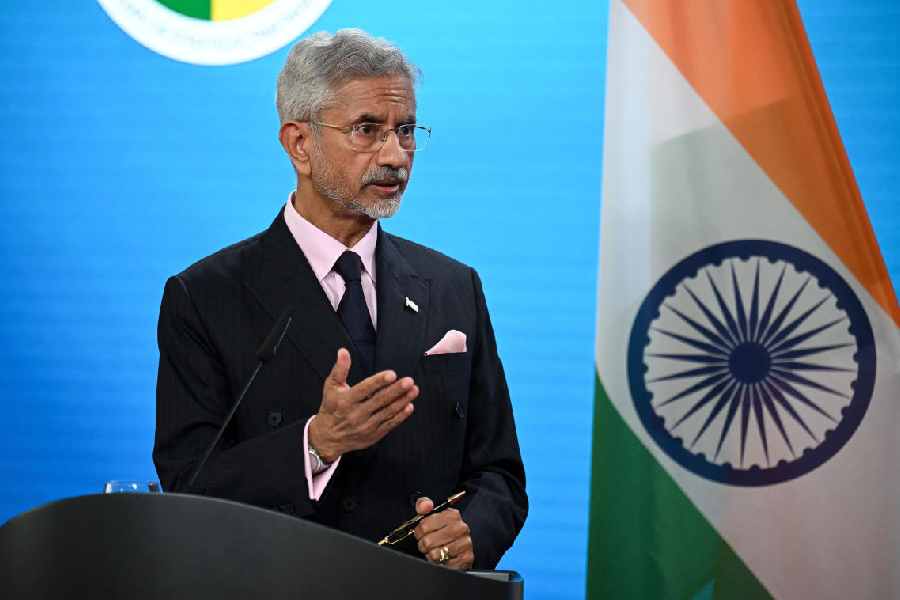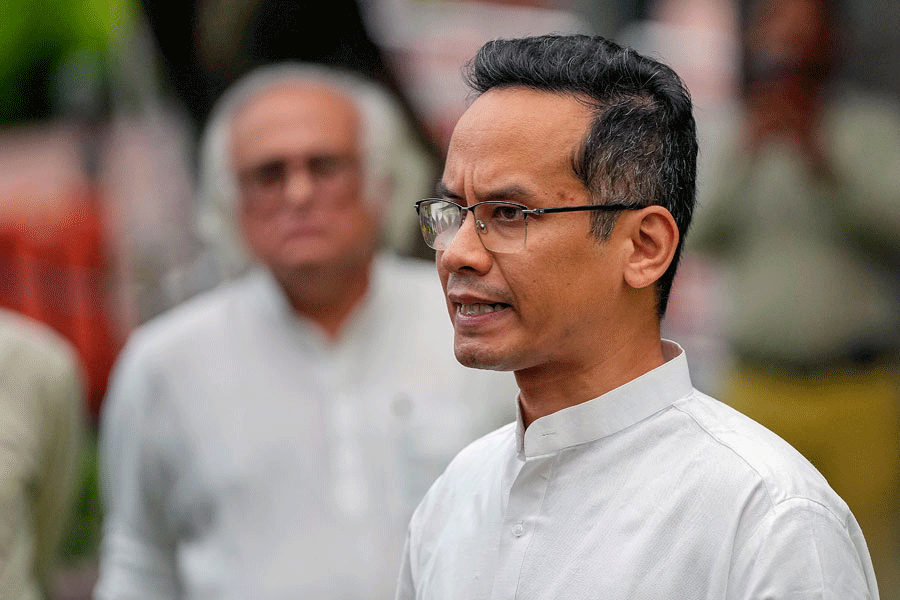|
|
| Hans Bethe (left): race against time |
I first encountered Hans Bethe (July 2, 1906-March 6, 2005) in the summer of 1969 at the University of Surrey, England. I was doing my PhD in nuclear physics at King’s, London. We all came to Surrey to hear the greatest nuclear physicist of the world at that time. Hans Bethe got his Nobel Prize in 1967. Among other stunning discoveries, the prize citation specifically (as is customary) mentioned the carbon cycle, the engine for energy production in stars.
Hans Bethe was at the zenith of his fame and prestige. On that sunny afternoon at Surrey, his lecture was on “The Structure of the Atomic Nucleus”. A familiar figure in England for a long time, he was presenting an analysis based on a thesis of one of his very bright and capable students at Cornell, John Negele.
His English was superb, lucid and clear. His only instrument for lecturing was a chalk and the huge blackboard. Soon the entire blackboard was filled up with equations, all produced from his dome-like head, no notes at all. For the first time in my life, I tested the elegance and joy of the many-body theory of the nucleus, which sounded rather simple on the blackboard. This was, of course, one of the applications of the Bethe-Goldstone equation, using a simple interaction between the elementary constituents of a nucleus, the protons and the neutrons.
Please remember that this was long after World War II and the Manhattan project, which produced the nuclear bombs. We knew that Hans had played a very important role in the Manhattan project at Los Alamos. We also knew that his ability for number-crunching in his head was legendary — he even won bets with the greatest of all greats, Richard Feynman, who was also at Los Alamos at the time. Hans could produce the answer before Feynman could, and that itself is worth a Nobel Prize.
Much later, I understood just a little about Bethe’s crunching technique. I give an example; (say) I want to multiply 49 x 37 without the aid of any tool. Simple. Multiply 50 x 37, then subtract 37 from it. It can be quite easily handled in one’s head.
Bethe, we also knew, was an incredible problem-solver. He had a knack for asking the correct question and then go on to find the answer in the simplest possible way (others, of course, frowned), and then crack the problem. The carbon cycle was no exception, Hans Bethe wanted to find out how stars release so much energy.
I was so much in awe of Bethe that during the traditional tea time after the lecture, I just could not come round to saying anything. I only noticed his big Germanic frame, large forehead, extreme calm, although he was far from being philosophic in his scientific outlook. He was, for instance, far more down-to-earth compared to Niels Bohr or Warner Heisenberg or, for that matter, Paul Adrian Maurice Dirac. When we came out of the lecture and boarded the train to go back to London, I suddenly realized that what seemed extremely simple an hour ago was actually quite complicated and that I had understood very little effectively; such was the power of Bethe’s magnetic lucidity.
One of the reasons I remember that encounter quite vividly is that the lecture, coming from a legend like Hans Bethe, was hugely inspiring. Without much delay, I started an entirely new chapter in my research career on two-body interaction, using Thomas Fermi approximation and so on. It was a direct fallout from Surrey. In those days, one didn’t get much of a guide in research, unlike today — one had to sort of find one’s own problems and hope to get the “nod” from one’s guide.
The first remarkable encounter with Hans Bethe happened in the famous lunchroom of Niels Bohr Institute, Copenhagen, where I met my “guru”, Gerry Brown, and his teacher and collaborator, Professor Hans Bethe. Gerry was visiting from Stony Brook and Hans from Cornell. I managed a handsome travel fellowship from London.
Niels Bohr Institute at that time was extremely lively, almost intoxicating, with ideas and excitement. Niels Bohr’s son, Aage, was yet to get his Nobel (which he did later) along with a perfectly charming and very loud American, Ben Mottelson. They added to the excitement. The atmosphere was however very European.
The lunchroom is part of the folklore of 20th-century physics; the tables were rather small, mostly taken up by a huge notepad and a set of pencils. This is the same lunchroom where the great physicist, Lev Landau, used to lie down, getting two tables together. Once his rest was deliberately disturbed by Niels Bohr himself, who kneeled down to whisper into Landau’s ear and unwittingly choked his ear with the smoke from his pipe.
The lunch was inevitably frugal and very Danish. But nobody cared, somehow to be close to Gerry and Hans was the central motivation. Gerry and Hans were deep in conversation — subject astrophysics, specifically the mysterious supernova explosion. “Oh, you come from India? And what are you doing in Eeengland? Have you met my friend Rudi Pearls (Sir Rudolf Peierls, the distinguished theoretical physicist at Oxford)?” Hans asked, in a combination of German, English and an occasional American twang. By then I had, fortunately, I had mustered enough courage to engage in some kind of dialogue. Hans and Gerry were not getting the “blast” right for the supernova — the greatest problem-solver admitting in a modest way that he was puzzled.
Hans eventually asked a question, “Why is it that Indians never reported citing a supernova explosion whereas the Chinese did?” I had to cook up some sort of a story citing the tradition of Sruti in India. Polite to the extreme, all he said was, “Aah! But Indians have such a rich tradition in astronomy.” I kept shut — intuitively I knew that Hans Bethe knew far more about Indian astronomy than I did.
Through Gerry the personality of Hans Bethe became more clear. A moving encyclopaedia, his interest traversed a very large canvas indeed. Shock waves, hydrodynamics, statistical mechanics, even solid state physics, European literature, detailed knowledge of the first part of the history of the 20th century and, curiously enough, food! A large eater, Hans’s favourite was roast beef, which Gerry (he himself told me) used to cook at CalTech or somewhere in California when they used a share a house. The tradition of having roast beef in winter time California went on for 25 years, culminating in many outstanding discoveries.
Hans Bethe was a fantastic raconteur and loved gossip himself, not the kind of idle gossip people usually indulge in, which is essentially backbiting and is often malicious. Hans never said anything nasty about anybody. His gossip was centred around key events and the key performers in those events and their idiosyncrasies — the Manhattan Project was at the top of the chart, Robert Oppenheimer’s eventual fascination with the Bhagwad Gita and biswarup darshan was next.
During such involved chats, the elements of macro-causality and Krishna’s biswarup darshan dawned on me. I felt really miserable for not having read the Gita — I was given the impression that it was only a religions treatise for the Hindus. It was Bethe’s forceful argument that put it in the right perspective.
Hans Bethe had three or four classics “at the ready”; black body radiation was one of them. It was very handy for “the bomb” problem and extremely useful for “black hole” physics. His only tool for calculation was an ancient slide rule, and, believe me, he was almost always right. The same calculation used to take “professionals” at least a couple of days with the aid of a computer.
Hans Bethe, being very much a part of the nuclear bomb business, later on championed for non-proliferation but recognized immediately that the main obstacle to the large-scale production and long-term future of nuclear energy was, in fact, the policy of non-proliferation. Quite early in his career, he realized that nuclear power is inevitable for the solution of global energy problems because it is the least polluting, in fact, it produced no pollution at all.
Long before the world woke up to this issue, he emphasized the importance of heavy water moderated thermal breeder reactors, using Uranium 233, Uranium 238 and, of course Thorium, as fuel. All his life, he devoted a large chunk of his time on finding out “how to avoid the energy crisis?”
The next and the last time I met Hans Bethe was at an American Physical Society meeting in 1985 or so, in Washington. Gerry Brown was also there. It was a very, very, very large conference. We knew Hans Bethe was there, but he was not seen in any of the nuclear physics sessions. After enquiring, I found that he was devoting all his time to the “nuclear power” section of the conference and we had to do with the next best, Gerry Brown, and that was exciting enough.
Late in the evening, when we were gallivanting in the foyer of the hotel, (sort of thing most sensible people do in any big conference) Hans Bethe suddenly breezed in and broke into one of the most lucid monologues about energy crisis while taking in the most common German beverage in large gulps. His mind was as clear as an autumn sky and I remember that he predicted about (what he called) “heating of the earth” (now known as climate change and greenhouse effect with a perceptible rise in temperature), and how and why nuclear energy is the only solution.
Soon, as predictable, it turned into a heated debate as some of the crowd around the table, for ideological compulsion, appeared to be extremely allergic to the word “nuclear” (nothing much has changed). I am painfully aware of one state with exactly the same outlook even now. As soon as the debate became emotional, going further and further away from any logical format, Bethe’s long pause became longer and suddenly, very calmly, he got up and declared, “Good night”. His voice was tinged with disbelief, and, possibly, with a trace of disgust.
A few years ago, I happened to be at Stony Brook and met Gerry and his wife, Betty, for dinner, which Gerry had lovingly cooked. I wanted to ensure that his culinary skill was still intact after so many years of winter holidays at California with Hans Bethe. Yes, it was very much there!
Gerry showed me a handwritten letter from Hans Bethe. The handwriting was a bit shaky and wobbly. He complained about age and his passion for neutrinos, the illusive elementary particles roaming around all over the universe. The letter, finally, ended with a request to Gerry — to pick up some award from Europe on his behalf — he was too old to travel.
It is impossible to erase Hans Bethe from our minds because, with his death, we have lost the greatest spokesman against weapons and, of course, one of those grand scientists who rarely come to our lives.
We celebrate hundred years of Hans Bethe.
The author is former director, Saha Institute of Nuclear Physics, Calcutta











